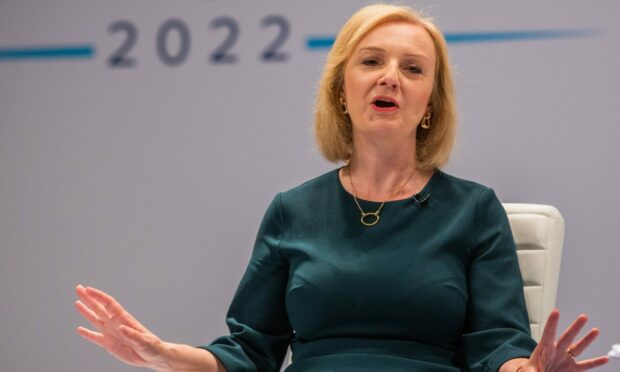It has been less than a month since Liz Truss was handed the keys to 10 Downing Street, but her premiership already appears to be in jeopardy.
Her party’s disastrous mini-budget has alienated voters across Britain and saw Labour taking a shock 33-point lead in one YouGov poll.
But does a Labour surge against Tories translate in Scotland where the SNP are dominant?
Polling expert Professor Sir John Curtice told us what the signs are across the north and north-east.
Are the Scottish Tories in trouble?
A bombshell YouGov poll put the Conservatives on just 21% of the vote on Friday, while findings from Survation had them trailing Labour by more than 20 points.
It’s a contrast to the last general election when former prime minister Boris Johnson led his party to their biggest win in decades.
While the Tory vote in Scotland has never been as strong, they still have six seats north of the border and half of them are in the north-east.
Even if Labour steal voters away from Douglas Ross’ Conservatives, Prof Curtice believes the SNP would be likely to benefit.
He said: “In seats where the Tories are first, it’s the SNP who are usually behind.
“Even if there’s a swing from Conservative to Labour in those seats, the beneficiaries in terms of the outcome could be the SNP.”
Allan Faulds, who runs data site Ballot Box Scotland, agrees.
He told us: “If the Conservatives are losing support in places like Aberdeenshire and Moray, those seats are probably going to end up in the SNP’s column.”
Could Labour pick up seats in Scotland?
During his speech at Labour’s conference, Keir Starmer struck an optimistic note when he spoke of Scotland.
His party – once the dominant force north of the border – still only has one seat here and will be desperate to make gains.
But the strength of the SNP means Labour may still struggle for success even if they win a Westminster majority.
Scotland-specific polling in recent months shows Nicola Sturgeon’s party in a similar position to where it was in 2019, winning 48 seats.
Prof Curtice told us: “A swing from Conservatives to Labour in Scotland will not necessarily have that much impact on the gap between Labour and the SNP.
“In this parliament there hasn’t been much evidence of the Labour party north of the border profiting from advances further south.”
He added: “I don’t see why supporters of independence would switch to Labour if there’s going to be a majority Labour government.
“If you want to get rid of the Tories in those places in Scotland where they currently hold seats, it’s the SNP you have to vote for.”
In Aberdeen North, both Dundee seats and Glenrothes, the SNP candidate was elected in 2019 with more than 50% of the vote.
Even if Scottish Labour profits from a Tory decline, Ms Sturgeon’s party would still win in these areas.
Is there any hope for Scotland’s Tory MPs?
For the Tories, this year’s damaging council election was a worrying sign of things to come.
Voters across Scotland punished Boris Johnson for his partygate antics and public anger against the Conservatives has now deepened.
Prof Curtice said: “I wouldn’t be surprised that Conservative support north of the border does get affected.
“It did go down in the wake of partygate. It’s the principal reason the Tories came third in the local elections.”
However, in areas where they are currently the biggest unionist party, the Conservatives will still hope to gain from anti-SNP sentiment.
Tactical voting came into play during last year’s Holyrood elections, when some pro-union MSPs held onto their seats despite the SNP vote improving.
Mr Faulds said: “When it comes to the Conservatives I have a question as to how insulated they may be by that constitutional question.
“Even if they’re losing support, are voters going to think, ‘Look, I don’t want to vote for these guys, but they’re the only party that can stop the SNP’?”


